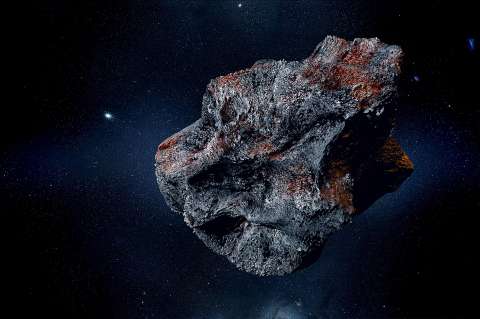a universe of potential

The Moon, other planets and asteroids contain a rich diversity of minerals, gases and water that could be used to provide raw materials, energy and sustenance to sustain human life and enable exploration deeper into space.
The Moon is the closest near-Earth object at a distance of around 385,000 kilometers, bound by the Earth’s gravity. Analysis of the Moon and the 400 kilos of lunar rock and regolith surface material already brought back to Earth indicate that it is rich in important and useful elements.
Other NEOs include asteroids that can be rich in carbon (C-type), metals (M-type) or silica (S-type). The number of near-Earth asteroids already identified now exceeds 20,000 and it continues to rise; more than 1,800 were discovered in 2018 alone.
First steps
Mining space resources may well come surprisingly quickly. Expeditions to near-Earth asteroids and to the Moon have already yielded remarkable discoveries.
The European Space Agency’s Rosetta probe, which was launched in 2004, astounded the world with images and data sent back from its Philae module after landing on a comet in 2015.
The first Japanese Hayabusa (“Peregrine Falcon”) probe brought some 1,500 grains of material back from the Itokawa asteroid in 2010. A second Japanese Aerospace Exploration Agency probe reached the Ryugu asteroid in 2019. If all goes well, its samples will be back on Earth two years later.
The Moon was visited several times by the United States, the former Soviet Union and, most recently, China. The samples returned by the various missions and the data gathered since then proves the mineral wealth of lunar rocks and dust. Moreover, recent orbital missions such as NASA’s LCROSS and Lunar Reconnaissance Orbiter, and India’s Chandrayaan-1 mission, further increased the attractiveness of the Moon by showing large deposits of water ice in several locations scattered throughout the lunar poles.
Many future missions are planned, by both national space agencies and private commercial entities. These missions promise to further unveil the resource potential and help us better understand the extraction and processing methods required to utilise the resource in space or on Earth.




